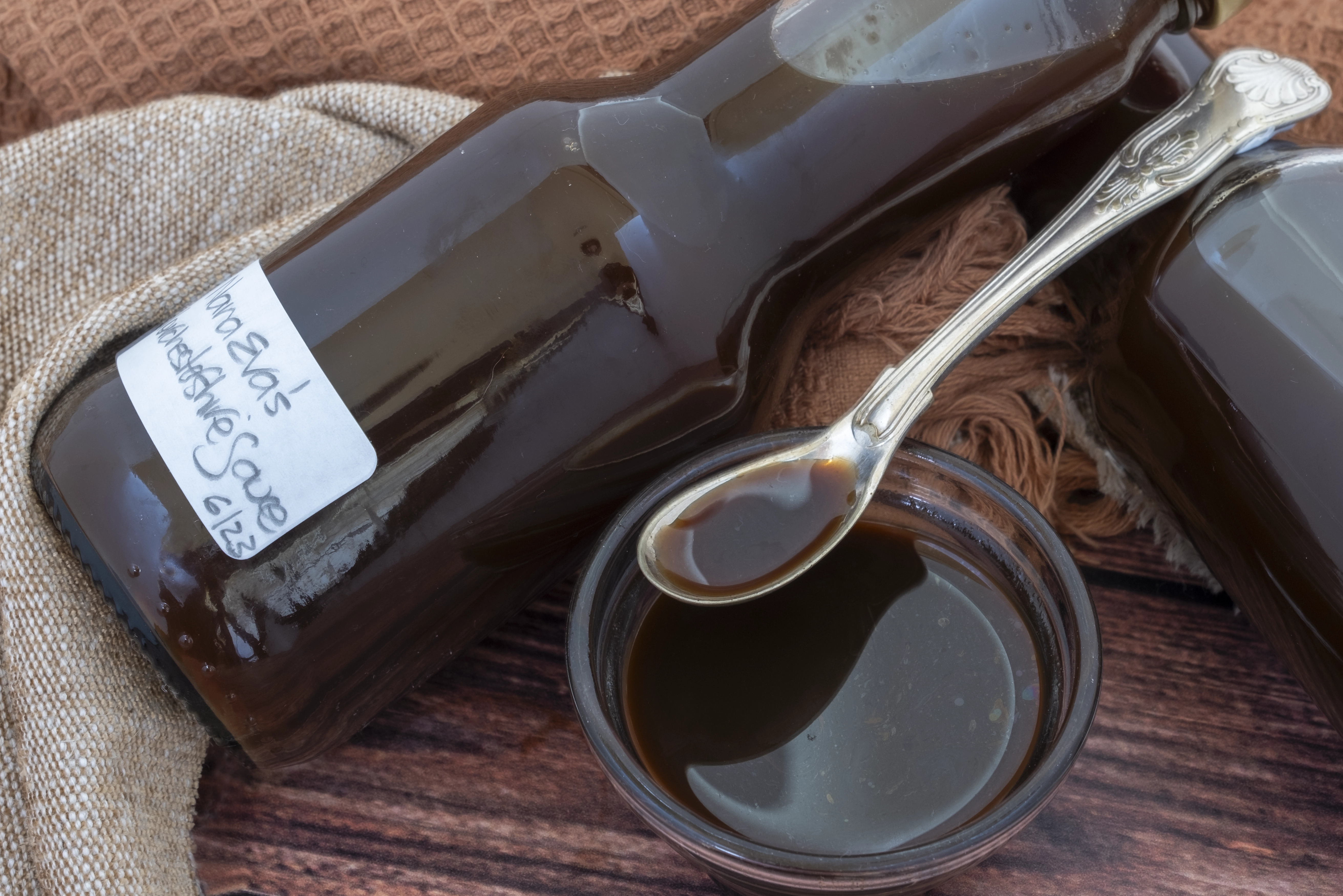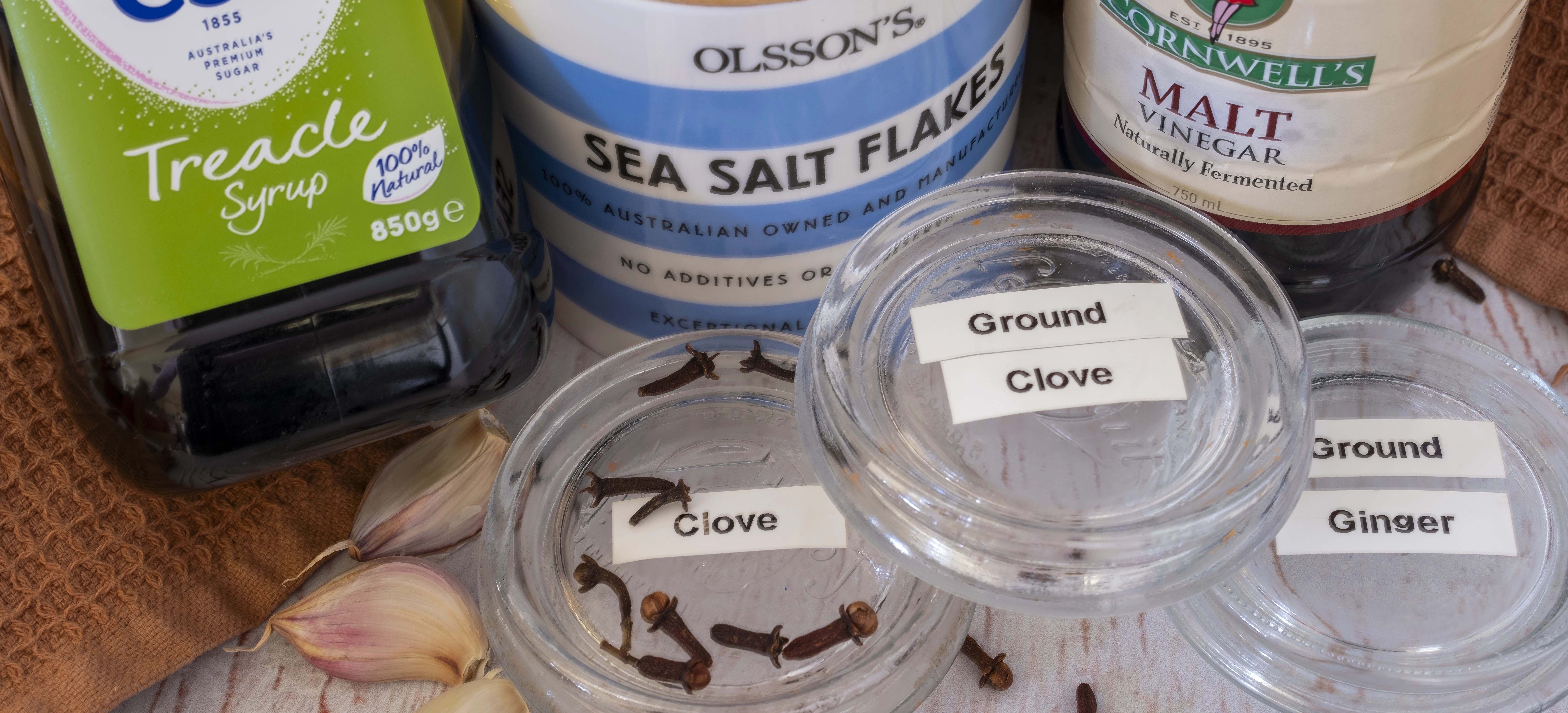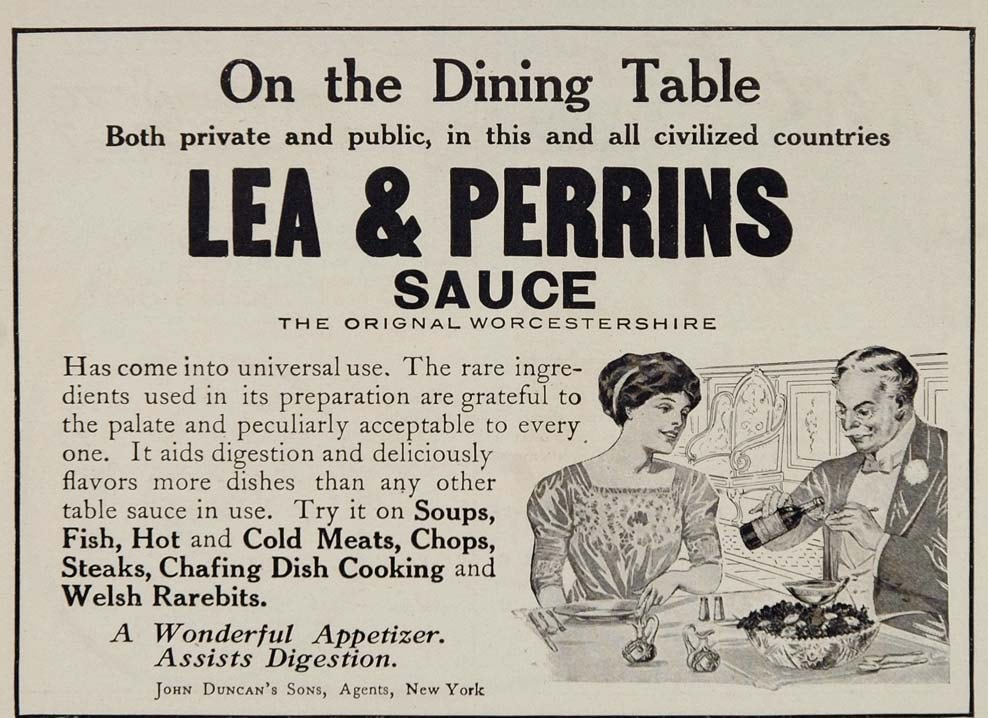Nana Eva's Worcestershire Sauce
- Pickles, Chutney, Relish & Sauces

Worcestershire Sauce, this umami powerhouse from the 1830’s, has definitely stood the test of time. Immortalised by the spicy Bloody Mary, piquant Steak Tartare, traditional English-style Steak & Kidney Pie and the infamous Oysters Kilpatrick to name a few, over 43 million bottles a year are produced by Lea & Perrins.
The obvious ingredients are known, but the spices remain a well-guarded secret. Numerous recipes are around, but this one is a dinky-die old fashioned Australian version. Special thanks to Craig for sharing his Nana’s treasured family recipe. And it uses up some of the excess plum jam in the pantry. Anchovies and tamarind extract were not available in her day, but it’s still full bodied and tastes like the real deal. Her secret- it needs at least 12 months to mature. In fact, according to Lea & Perrins they mature it for 18 months. Make a batch today, store it in the pantry, give it a shake every now and then, then add liberally to your fav’s when it’s matured.
It's pronounced ‘woos-ter-sheer’ and is often described as inky brown, sweet and salty, funk, and fishy, peppery and piquant. Yeap-that sums it up.
- Preparation Time:
- 30 minutes
- Cooking Time:
- 2.5 hrs plus straining overnight
- Quantity:
- 3 x 250 ml sauce bottles
PREPARATION
Sterilise good quality sealable bottles with lids that have a protective coating. Have hot and dry for the bottling stage.

INGREDIENTS
- 2 litres
- Malt vinegar
- 500g
- Treacle
- 500g
- Plum jam
- 1 1/2 tablespoons
- White pepper, ground
- 1 1/2 tablespoons
- Salt, cooking
- 45g
- Fresh garlic
- 15g
- Ginger, ground
- 25g
- Cloves, ground
- 20g
- Cloves, whole
METHOD
Peel the fresh garlic and pound gently in a mortar and pestle. Place it and all the remaining ingredients in medium/large preserving pan or heavy bottomed stainless-steel pan. Bring to the boil and reduce immediately to a gentle simmer. Simmer with the lid on for 2 hours, stirring occasionally.
Strain through fine muslin, or equivalent material, overnight. This can be made by placing the muslin in a strainer and then the strainer over a deep bowl or saucepan. The following morning, gently squeeze the muslin to extract the last of the sauce. Discard the strained pulp.
Place hot sterilised sauce bottles on a wooden board to prevent the bottles from breaking which can be caused by the heat differential between the hot bottle and a cold surface. Have the hot bottles and caps sterilised ready for the bottling stage. Use a funnel to pour into warm dry sterilised screw cap sealable bottles, fill to approximately 2.5cm (1 inch) from the top and seal while hot.
Allow to cool, wipe down the jars to remove any spillage and label. Store in a cool dark place in the kitchen or pantry for 12 months to mature. Shake the bottles occasionally.
It will keep unopened for up to 2 years in a cool dark pantry or other suitable storage area.
NOTES
- Use lids which have a protective lining to withstand the corrosive action of the vinegar.
- Malt vinegar is used for its intense flavour while wine vinegar and cider vinegar are better for preserving the bright natural fruit and vegetable colour and flavours in chutney.
- If you don’t have a preserving pan, use a large heavy bottom pot, preferably stainless steel. This will distribute the heat evenly across the pan and the sauce while it’s cooking.
- Use good quality pickling salt. Many commercial salt brands contain stabilisers and anti-caking agents and often iodide which forms a whitish haze and sediment. These additives and in particular iodine can affect the appearance and taste of pickles and preserves during the maturation and storage period. The ingestion of a cocktail of anti-caking chemicals such as calcium silicate, sodium silicoaluminate, tricalcium phosphate, magnesium carbonate, silicon dioxide and yellow prussate of soda, is also unnecessary. Read the label before buying and look for salt that is free from any artificial additives. My favourite is Olsson Cooking Salt. No commercial benefit is received from Olsson Salt.
- Clove (Syzygium aronaticum)
- Cloves are the dried unopened flower buds of a tropical evergreen plant. Borne in cluster of 10-15, they are picked when full size, still green but just on the verge of turning pink.
- Aroma is pungent, warm, aromatic, camphor-like and faintly peppery. Flavour is intensely pungent. Used in moderation, cloves bring a pleasing, palate-cleansing freshness, and sweet spicy flavour to food. Its powerful flavour is usually tamed by blending with other similar warming spices to soften its dominance. Use clove sparingly.
- Look for cloves that are plump, not shriveled or broken and where the majority retain their rounded tops. Unless you use a lot of whole or ground cloves, purchase in small quantities to retain its freshness and aromatic vibrancy.
- Ginger (Zingiber officinale)
- Ginger has a hot-spice, citrusy woody taste. It’s available as a fresh underground stem, a rhizome, or as a finely ground powder. The dried version is used in baking and spice blends whereas fresh ginger is used widely in Asian cuisine. Do not substitute dried ginger for fresh as the dried form has a stronger and more aromatic flavour. When purchasing fresh ginger, avoid older rhizomes with signs of shrivelling as the rhizome is drying out and the flesh can be fibrous.
- Treacle
- Treacle is very dark in colour, almost black, made from molasses and sugar syrup. It has a rich, intense, and slightly bitter flavour and is the by-product of refining sugar. It’s widely available in supermarkets in the sugar section.
- Jars should be clean and hot with lids that are lined with a protective coating, which can withstand the corrosive action of the vinegar.
- This video shows the fascinating story of how Lea & Perrins actually produce their famous sauce.
 Lea & Perrins Advert Manchester Courier
Lea & Perrins Advert Manchester Courier
